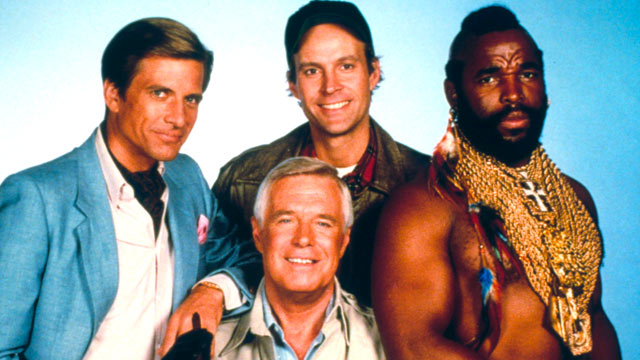David Ramel from 1105media.com is writing an article that includes the Microsoft interviewing process and he send me some questions:
[David] How would you succinctly sum up the Microsoft interview process as compared to those of other tech companies?
[Chris] MS does some things similarly to other high-tech companies I’ve worked with, e.g. having each interviewer focus on an aspect or aspects, e.g. team skills, people skills, technical skills, etc., expecting a candidate to ask questions, communicating between interviewers to push more on one area or another, etc. The riddle questions are a uniqueness at Microsoft (at least they were when I last interviewed), but theyire pretty rare these days. Coding on the whiteboard also seems pretty unique to Microsoft (myself, I prefer the keyboard : ).
[David] How has the Microsoft interview process changed over time? (Microsoft seems to have shaken up the tech interview process some years ago with those brain-teasing puzzle� questions, but now seem to be much more technically-oriented and job-specific. Just wondering about your thoughts on this observation.)
[Chris] While I have had them, puzzle questions were rare even when I was interviewed 7 years ago. Since then, I haven’t run into many people that use them. However, when they are used, an interviewer is often looking for how a candidate works through an issue as much as the solution that they come up with. In an ever changing world, being able to learn and adapt quickly is a huge part of how successfully you can be in the tech industry at all and at Microsoft specifically. I prefer technical design questions for these kinds of results, however, and it seems that most
’softies agree.
[David] What would you say was the biggest factor in your being offered a job at Microsoft?
[Chris] I had a reputation outside of MS before I interviewed, but that almost didn’t matter. If I hadn’t done well during the interview, I would not have been offered the job. When in doubt, a team generally prefers to turn away a good candidate rather than to risk taking on a bad one, so if there’s anything wrong, team fit, technical ability, role fit, etc., a candidate won’t get an offer.
[David] What’s the single most important piece of advice you can offer to those preparing for a Microsoft job interview?
[Chris] You asked for just one, but I’m going to give you two anyway. : )
- If you need more information to answer a question, ask for it. Thatis how the real-world works and many questions are intentionally vague to simulate just this kind of interaction.
- Try to answer non-technical questions based on your personal experience, e.g. instead of saying
“here’s how I would deal with that situation,“� say “I had a similar situation in my past and hereis how I dealt with it.“� This is a style of interviewing known as
behavioral� and even if your interviewer doesn’t phrase his questions in that way, e.g.
“give me an example of how you dealt with a situation like blah,“� it’s helpful and impressive if you can use your own history to pull out a positive result.
[David] Could you please share any other observations you have on the Microsoft interview process that may not be covered in your site or the Jobsblog?
[Chris] I run a little section of my web site dedicated to the MS interviewing process and the thing I will tell you is this: don’t prepare. Be yourself. If you’re not a fit for MS, no amount of preparation in the days before an interview will help and if you are a fit, that will come through in the interview. Also, make sure you ask questions. Working at Microsoft isn’t just a job, it’s a way of life, so make sure you’re sure you want the team and the job for which you’re interviewing.
[David] Does MS provide training for interviewers? If so, what do they stress most?
[Chris] I’m sure MS does provide training for interviewing, but Iive never been to it. At Intel, I learned the behavioral interviewing technique, which Iive used in every interview since, both as an interviewer and as a job candidate.
[David] Do you have standard questions, or do you tailor them to the situation? If the latter, is it usually tailored for team fit, to a specific open position, particular skills, etc.?
[Chris] I have once standard technique question and a few standard behavioral interview questions. The technical question is to ask them what their favorite technology is and/or what they consider themselves to be an expert� in and then drill in on their understanding. If they can answer my questions deeply, this shows passion about technology and the ability to learn something well, both of which are crucial for success at MS.
My behavioral interviewing questions are things like “Tell me about a time when youive been in conflict with a peer. How did you resolve it? What was the result? What did you learn?“� and
“Tell me about a time when you had much too much work to do in the time you were given. How do you resolve that issue? What was the result? What did you learn?“� The core idea of behavioral interviewing is that past behavior indicates future behavior, so instead of asking people things like
“How would you deal with such-and-such?�” you ask them “How did
you dealt with such-and-such in the past?“� This forces them to find a matching scenario and you get to see if they way they dealt with the issue in real life matches what you want from a team mate in that job.
[David] How would you describe the kinds of coding questions you ask? A couple of real examples would be perfect!
[Chris] I don’t often ask coding questions, but when I have, I let them use a keyboard. I hate coding on the board myself as it’s not representative of how people actually code, so I don’t find it to be a good indicator of what people will actually do. I guess I even use behavioral techniques for technical questions, now that I think about it. : )


 This is the last in a 4-part series on how to interview well. Parts 1-3 covered
This is the last in a 4-part series on how to interview well. Parts 1-3 covered  If you just found yourself here, you’ve stumbled onto a multi-part series on the technical interviewing process. Part 1 covered
If you just found yourself here, you’ve stumbled onto a multi-part series on the technical interviewing process. Part 1 covered  It’s incredibly important to interview well as you’re building your technical team. Further, interviewing well is hard to do and, like anything, you only get out of it what you put into it. In part 1 of this series, we discussed
It’s incredibly important to interview well as you’re building your technical team. Further, interviewing well is hard to do and, like anything, you only get out of it what you put into it. In part 1 of this series, we discussed  In 30 years, I’ve done a lot of interviewing from both sides of the table. Because of my chosen profession, my interviewing has been for technical positions, e.g. designers,
In 30 years, I’ve done a lot of interviewing from both sides of the table. Because of my chosen profession, my interviewing has been for technical positions, e.g. designers, 
